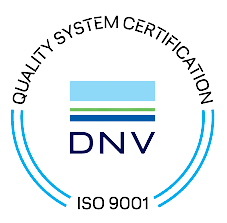
Today the world requires wireless humidity data loggers for personal or business use. Data centers help a company store information and run an online business. Data centers connect people through Skype, email, Instagram, or Facebook despite the long distances. The increased use of cloud services such as Google Drive and Dropbox requires the data centers to be more efficient.
Data centers play an important role in the IT infrastructure of today. With a large amount of stored information, data centers are responsible for safeguarding and delivering information reliably. Data centers keep on facing security issues. The issues are not only from hackers but also damage to infrastructures like telecommunications and power supply.
Improved security measures like good security and controlled access are put into practice. Unnecessary power supplies and data communication connections are installed for dealing with any kind of damage threats. Data centers also need to avoid downtimes. Downtime can lead to loss of revenue and affect the operations of daily business.
In order to prevent downtime, data centers need to be sure that staff is trained properly and carry out periodic maintenance. Stable environmental conditions are also required for computers to run efficiently. The reliability of a computer depends on a stable environment. Strict controls over humidity, temperature, and airflow are necessary for favorable system reliability and performance.
Environment factors of the data centers are continuously monitored and one of the activities is ambient room monitoring. Ambient room monitoring provides an overall assessment by measuring ambient humidity and temperature throughout the facility. The typical ambient temperature ranges from 21 to 23 degrees Celsius which is best for operator comfort and system reliability.
However, 22 degrees Celsius is good in order to maintain a safe humidity level. Relative humidity is moisture present in the air in proportion to a maximum amount of moisture in the air at a given temperature. The ambient humidity levels between 45% and 50% were suitable for the safe operations of the server.
Data center equipment is very sensitive to high humidity levels and water condensation can occur which leads to hardware corrosion. Low humidity levels can generate electrostatic discharge. This discharge can lead to irregular interference which causes system damage or temporary malfunctions. It is also important to prevent cooling short cycles.
Short cycles can happen when cool air returns to the air conditioner without circulating in the equipment. The A.C. registers that the temperature is cooler than actual and cycles out cooling mode but in reality, the cooler air is still required by the equipment. Humidity and temperature sensors like wireless humidity data loggers can be installed near A.C. units and at potential hotspots for detecting malfunctions.






